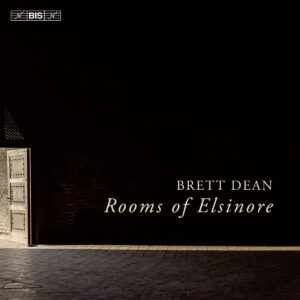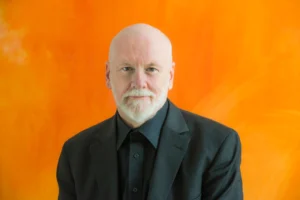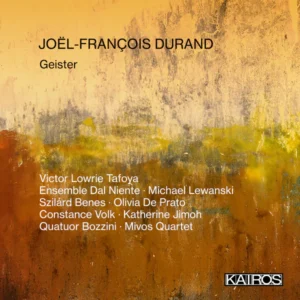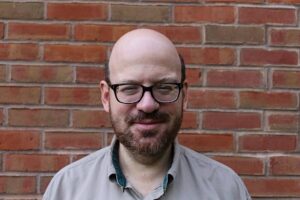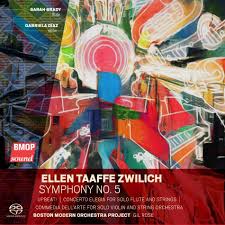Untuxed, a series of informal, intermission-less Friday-night concerts, returned to Seattle Symphony last night in the hands of its inaugurator, Ludovic Morlot, the Symphony’s former Music Director and current Conductor Emeritus. The program consisted solely of Shostakovich’s wartime Eighth Symphony (1943), a massive piece that can betray a deficient ensemble, with its multitude of lengthy and exposed solos for woodwinds, cello and violin (whose associations with death and funeral music in European are readily embraced by its composer), and by the perennial balance challenges posed by Shostakovich, whose legacy is littered with the corpses of performances that conveyed only two dynamic levels: with brass and without brass.

The Eighth is also a piece that has languished in the shadow of its neighbors, including the epic Fourth Symphony (banished before its premiere in 1936, and still unheard at the time the Eighth was composed, suggesting that Shostakovich might have intended the latter as a substitute for the former), the popular Fifth (whose first movement is echoed by its counterpart in the Eighth with its broad tempo and dotted rhythms that are interrupted midway through by a rough march), the Sixth (whose long, slow first movement is followed by two faster, shorter ones), and the martial Seventh and autobiographical Tenth. No. 8, in fact, had only been mounted once before by Seattle Symphony: in 1985 conducted by the composer’s son Maxim.
For all these reasons, Morlot’s selection of the Eighth to anchor the season’s first subscription week (whose full-length Thursday and Saturday concerts additionally featured Boulez and Ravel) was an audacious one, especially coming right after the ensemble’s summer layoff, and requiring part-time players to to cover the additional flute, bassoon and percussion parts plus a fortified complement of low strings). Happily, the musicians were more than ready for the task. The sparse audience attending the huge onstage forces experienced the full expressive and dynamic range set out by the composer, starting with the somber main theme of the opening Adagio, presented by the first violins with minimal vibrato in contrast to the lusher tone used for the more extroverted second theme. The piercing climax that came ten minutes later was the loudest unamplified sonority I can recall hearing at Benaroya Hall since Bluebeard’s Castle in 2012, and its subsidence into the prolonged English horn solo that concludes the movement was handled exquisitely by the Symphony’s longtime specialist Stefan Farkas (who received the first soloist’s bow afterwards).
Happily, the musicians were more than ready for the task. The sparse audience attending the huge onstage forces experienced the full expressive and dynamic range set out by the composer, starting with the somber main theme of the opening Adagio, presented by the first violins with minimal vibrato in contrast to the lusher tone used for the more extroverted second theme. The piercing climax that came ten minutes later was the loudest unamplified sonority I can recall hearing at Benaroya Hall since Bluebeard’s Castle in 2012, and its subsidence into the prolonged English horn solo that concludes the movement was handled exquisitely by the Symphony’s longtime specialist Stefan Farkas (who received the first soloist’s bow afterwards). The mechanistic viola melody that launches the second of the work’s two scherzos is the one excerpt from the Eighth that regularly gets quoted in popular media—usually in connection with wartime Russia. Its rendition Friday night was aptly militant but not muddled. The clattering climax that concludes this movement was another high point, with the drums’ brutal at the forefront, but not enough to drown out the dotted figures in the remaining instruments, whose subsidence from fff to pp as the fourth movement’s passacaglia theme emerges was another transition whose dynamic subtlety is often lost in less careful hands.
The mechanistic viola melody that launches the second of the work’s two scherzos is the one excerpt from the Eighth that regularly gets quoted in popular media—usually in connection with wartime Russia. Its rendition Friday night was aptly militant but not muddled. The clattering climax that concludes this movement was another high point, with the drums’ brutal at the forefront, but not enough to drown out the dotted figures in the remaining instruments, whose subsidence from fff to pp as the fourth movement’s passacaglia theme emerges was another transition whose dynamic subtlety is often lost in less careful hands. The success continued in the closing Allegretto, which requires virtuosity from many instruments (including the bass clarinet), plus enough interpretive restraint to convey the slightest touch of optimism at the work’s C major conclusion (Mariss Jansons calls it “a small light at the end of a very long tunnel” that’s possibly just an illusion).
The success continued in the closing Allegretto, which requires virtuosity from many instruments (including the bass clarinet), plus enough interpretive restraint to convey the slightest touch of optimism at the work’s C major conclusion (Mariss Jansons calls it “a small light at the end of a very long tunnel” that’s possibly just an illusion).
Shostakovich has always been one of the 20th century’s most controversial and contradictory composers. Haunted by censorship and the threat of imprisonment (or worse), his music was championed by Britten and Bernstein, and praised by Rudolf Barshai for “leaving its blood on the stage”, but also dismissed as “bad Mahler” and “battleship grey” by Boulez and Robin Holloway. Whatever one’s feelings about it, though, it’s impossible to survey the landscape of late- and post-Soviet music—Schnittke, Silvestrov, Ustvolskaya, Pärt, Gubaidulina, etc.—without recognizing its inexorable connection to Shostakovich. Unlike Prokofiev, who was arguably a greater composer, but a historical dead-end who left no stylistic heirs, Shostakovich articulated a world view that managed to embody the experience and expression of multiple generations of Eastern European composers.
Seattle Symphony has had a long affinity for Shostakovich, extending back to Gerard Schwarz’s lengthy tenure as Music Director. The presence of several orchestra members who grew up in the Soviet Union surely helps as well. In that sense it’s fitting for his music to accompany the resumption of the Untuxed series following a 2½ year absence brought on by post-COVID consolidation and the executive turmoil that reached a head with the acrimonious departure of Thomas Dausgaard as Music Director in January 2022, leaving a gap that will finally be filled by Xian Zhang’s arrival in Fall 2024. It’s a testament to the caliber of its musicians and the leadership of its section principals that the artistic standards of the Symphony have remained so high despite the organization’s offstage issues.
